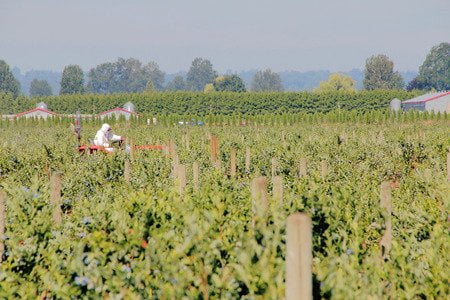The HSE has released their latest figures for 2018 about UK health and safety – and the results may be surprising for some. The annual HSE report always makes for sobering reading. The good news is that health and safety standards continue to improve – but as always there is still room for improvement. What may be surprising to anyone unfamiliar with the state of health and safety in UK industry is which is the most dangerous industry. Construction, off shore drilling and mining, may all have a reputation for being dangerous, but they are still well behind one industry – farming. In fact, farming happens to be one of the most dangerous industries in the whole world.
Over the course of the past 12 months, 27 people have been killed working on farms in the UK. This equates to fatalities per 100,000 rate of 7.6% – far higher than the all industry average of just 0.43%.
Why is farming so dangerous?
The isolated nature of agriculture means that farmers are often working on their own In a remote location. When you consider that the job involves heavy machinery and large animals, the increased risk of injury is easy to see.
The HSE statistics also reveal that people aged over 60 accounted for a quarter of all fatalities over the last year. This is significant because people aged 60 or older account for just 10% of the workforce.
Because so many farmers work alone, there is little (if any) opportunity for oversight. Risk assessments are not checked by a third party, which means that potential dangers go unrecognised.
Are there lessons for the construction industry?
Although statistically safer, the construction industry is still a relatively high risk – particularly in terms of injury. In order to drive down the rate of incidents, construction firms can still learn from the farming industry.
1. Ensure adequate staffing
Lone workers are at most risk of being involved in a fatal accident. Although some tasks do not require multiple employees for completion, increasing headcount may help to reduce those risks. It is your legal duty to protect employees, so the additional costs may actually be a small price to pay when people’s lives are at risk.
2. Use equipment correctly and safely
Heavy equipment is a standard aspect of almost all construction sites. Your employees need to know how to use machinery safely – before beginning any task. You should also routinely monitor their activities to ensure that equipment is being used correctly.
3. Have risk assessments assessed
To ensure that your risk assessments are fit for purpose and that nothing is being overlooked, you must regularly review them all. For additional protection, you should also consider having your risk assessments audited by an experienced third party who can also make suggestions that will improve the protections offered to employees.
Confirmation of improvement
Although the HSE report documents the number of failings, at work fatalities and incidents are decreasing. This is a testament to the hard work of businesses who are raising standards for their employees – long may it continue.
This blog was written by Veritas Consulting Safety Services in Birmingham UK – – which Ok Alone is pleased to share with permission. Veritas is an SME’s favourite go-to consultant for health and safety know-how. Bucket loads of experience. Fluent in practical advice. Solutionist with a brain you can pick.

The Ok Alone team writes informative articles about lone working. Through our articles, we aim to educate readers on the benefits and best practices of using our lone worker app, and how Ok Alone can help mitigate risks and enhance communication between workers and monitors. Learn about other areas including legislation, risk management, and legal compliance plus lone worker features such as man down, high-risk check ins and location monitoring.

